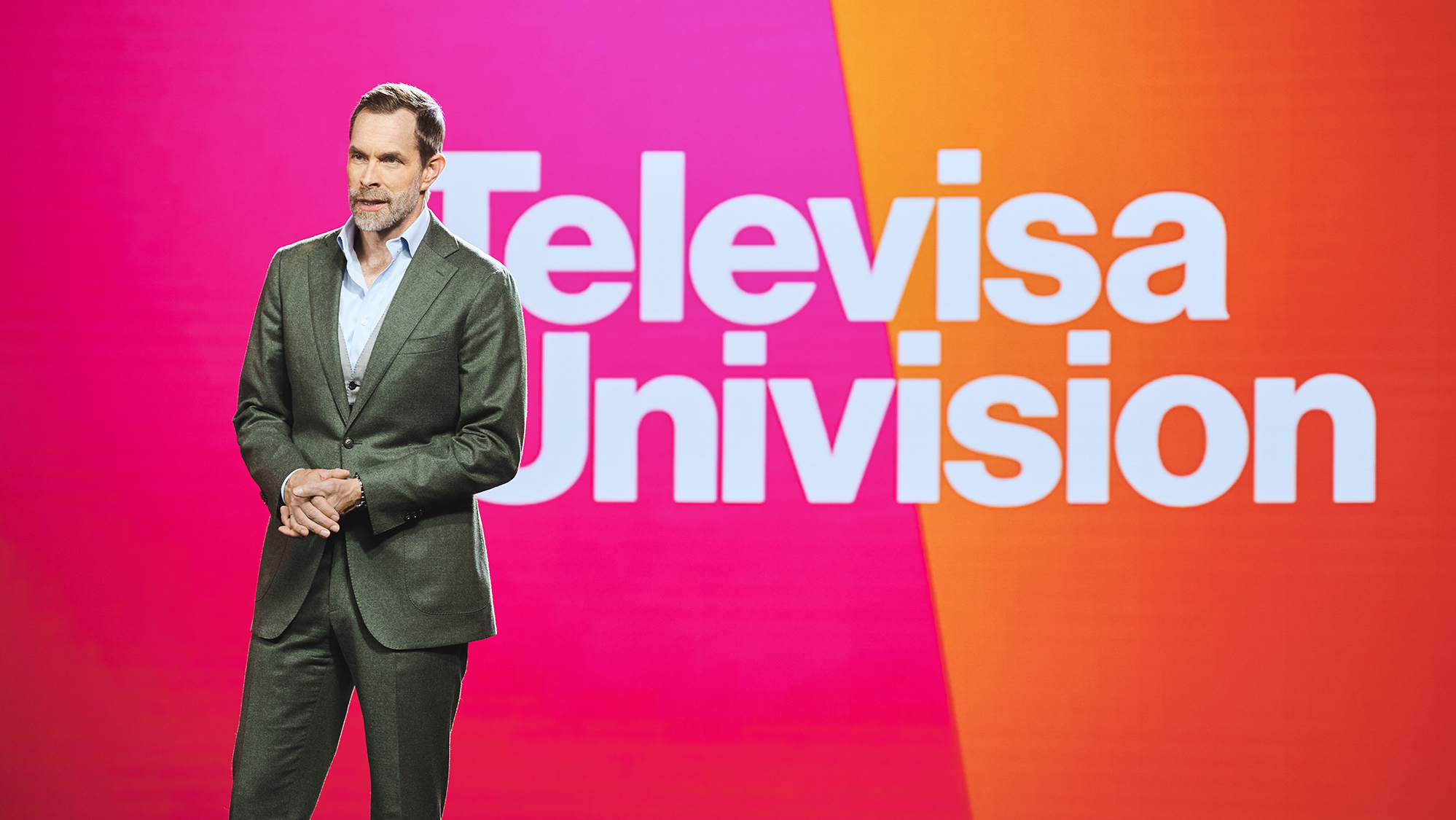TelevisaUnivision Goes for Biggest ‘Niche’ Streaming Audience of All with Vix and Vix Plus: 600 Million Global Spanish Speakers
CEO Wade Davis promises 'a massive capital commitment of billions of dollars on new Spanish-language content'

There must have been something in the water last week. First ViacomCBS goes all Paramount Global on Tuesday, ditching the legacy names that made it many billions of dollars over the past few decades during a 2.5-hour presentation about its streaming-first future. Then on Thursday, the recently merged TelevisaUnivision held its own lengthy investor briefing, unveiling plans to merge various streaming operations into just two, the ad-supported Vix and the subscription-based Vix Plus.
Also: TelevisaUnivision Set To Launch ViX and ViX Plus Streaming Services
The reshaped Vix (it has been a rollup of multiple separate Univision properties) launches at the end of next month. Vix Plus will come later in the year, with the two services expressly designed to provide different viewer experiences, but all of it focused on a nuanced approach to creating lots of different shows for 600 million different people across the Western Hemisphere who happen to speak Spanish.
For all their differences, the two Vixens (Vixi? Vixa? Vixations?) will sit in the same app, which seems imminently sensible, and perhaps the kind of smart brand overhaul you can most easily do after a gigantic merger where you need to integrate everything anyway.
Many of the big general-service U.S. streamers are trying to integrate their operations more seamlessly, too, though often far less cleanly. Paramount Plus, for example, is launching 18 linear channels inside its two subscription tiers, and also is launching a bundle with Showtime OTT built into the interface. Disney is slowly integrating various combinations of Disney Plus, Hulu, ESPN Plus and Hotstar into their interfaces.
There are other reasons to track this deal and the company behind it. The $4.8 billion TelevisaUnivision merger was announced 10 months ago, midwifed by powerful partners Liberty Global, Softbank and Alphabet. Univision’s private owners had been looking for a good partner for several years, after discarding a strategy that included a string of odd (and short-lived) acquisitions of, shall we say, non-core assets, such as Gizmodo and The Onion.
Along the way, Televisa has held various stakes and output deals in Univision, stretching back to the 1950s. As those stakes, and content deals, have come and gone, so too has the sometimes considerable ratings of the Univision network in the United States. Now, they’re on the same side permanently.
NEXT TV NEWSLETTER
The smarter way to stay on top of the streaming and OTT industry. Sign up below.
Their combined assets include dozens of Univision U.S. broadcast TV and radio stations, the Prende TV AVOD service, Univision and UniMas broadcast networks, Televisa’s four “free-to-air” channels and a whopping 27 pay TV networks, its Videocine movie studio, and Blim TV SVOD service. Televisa alone produced 86,000 hours of news, sports, sitcoms, dramas, reality shows, movies, educational and children’s programming and more in 2020 for its various Mexican outlets.
When the merger was announced, the companies said, “The combined entity will have the content, production capacity, intellectual property, global reach and financial resources to aggressively pursue the relatively nascent global Spanish-language streaming opportunity.” Thursday’s Vix/Vix Plus announcement was about making good on that bold statement, with a content machine now pointed toward streaming in a big way.
“One (difference): a massive capital commitment of billions of dollars on new Spanish-language content,” CEO Wade Davis said. “This is multiples of what any other service spends in the language, (thanks) to an extreme conviction in the opportunity for the world's first large-scale streaming service, exclusively serving the Spanish-speaking world. So let's be clear: Our new service is not a rescanning of a TV offering. What we're building is incremental to our TV business, hundreds of originals, thousands of hours of exclusive, live premium soccer, live original news, and an innovative product at an unbeatable price point.”
Vix/Vix Plus will reach not just the U.S. and Mexico but also 19 other Latin American countries, with what Chief Transformation Officer Pierluigi Gazzolo touted as “the first-of-its-kind global streaming product with two very distinctive experiences.”
As is becoming the ad-supported 2ay, Vix will offer a “broadcast-like experience” with live news and sports, entertainment across all genres, delivered both on demand and in linear channels.
Vix Plus launches in the second half of the year with “our only focus … to deliver more native Spanish content than any other streaming platform.” That includes, among much else, a truly overwhelming amount of futbol, 3,000 soccer matches on Vix Plus over the next year, including World Cup games, regional CONCACAF qualifiers, national club leagues like Mexico’s top-tier Liga MX and much else.
And though TU executives touted their reach to “over 60% of the respective TV audiences in both the U.S. and Mexico,” i.e., the world’s most valuable and most populous Spanish-language markets respectively, they’re also promising a far more in-depth and nuanced approach to making shows for people who live in other parts of the hemisphere.
Combined, the two services will offer 50,000 hours of free and paid content over the next year, including “regionally produced” content that “represents diverse Spanish cultures authentically,” Gazzolo said.
“This audience is still underserved, given that there is not one single global streamer that fully and exclusively targets them with Spanish-language-first content,” Gazzolo added. “Only a fraction of the content (that) the global services offer is originally produced in Spanish. Second, we will be putting Spanish-language content and our culture at the center of everything we do.”
“Global streamer” is, of course, a reference to services such as Netflix and Disney Plus, which count respectively Casa de Papel (Money Heist) out of Spain and Pixar’s Latinx-themed (but mostly English-language) Encanto among their biggest all-time streaming hits.
Those services and others approach Spanish-language programming in a way that’s anything but nuanced. Even Spanish as spoken by the tongue’s mother country differs significantly in different parts of Spain, never mind the New World. That lack of nuance and particularity is reflected in the small portion of their programming that happens to originate in the Spanish language.
The cultural differences between, say, Cubans, Dominicans, Puerto Ricans, Panamanians, Venezuelans and Mexicans in and around the Caribbean, are far vaster than the body of water where they all sit, despite their common language and shared roots. That doesn’t even begin to describe the regional rivalries, histories, cultures, conflicts and even slang differences across South and Central America.
To help bring more of those viewers into the Vix viewership, the company said it will make shows that are relevant to specific territories within Latin America, while spending “significant incremental dollars” to acquire users in those 19 other countries.
That speaks to one of the big challenges facing TU as it tries to expand beyond its home territories. Executives were vague about pricing, saying they’ll announce subscription charges for Vix Plus in a subsequent event.
But just as the global streamers have found challenges in pricing for the vast and complex Indian market, TelevisaUnivision may need to be as nuanced in pricing its services by territory as it has committed to do in content production.
They may quickly find that subscription prices that make sense in San Antonio, Miami, Los Angeles, Guadalajara, or the D.F. won’t play nearly as well in El Salvador, Ecuador or Bolivia (for that matter, given El Salvador’s fervent official embrace of cryptocurrency, will Vix Plus take payment in Bitcoin when it launches there?).
TelevisaUnivision is right to embrace its vast Spanish-language roots for the streaming era, and take advantage of the attendant opportunity as it figures out what kind of company it will be going forward beyond its enviable array of assets.
And it certainly has potential home-field advantages over competitors such as Netflix and Paramount’s ad-supported Pluto.TV, which have operations across Latin America. But making all the pieces fit together, at a sustainable level, will be the challenge for TelevisaUnivision as it fully embraces its streaming potential. ■
David Bloom of Words & Deeds Media is a Santa Monica, Calif.-based writer, podcaster, and consultant focused on the transformative collision of technology, media and entertainment. Bloom is a senior contributor to numerous publications, and producer/host of the Bloom in Tech podcast. He has taught digital media at USC School of Cinematic Arts, and guest lectures regularly at numerous other universities. Bloom formerly worked for Variety, Deadline, Red Herring, and the Los Angeles Daily News, among other publications; was VP of corporate communications at MGM; and was associate dean and chief communications officer at the USC Marshall School of Business. Bloom graduated with honors from the University of Missouri School of Journalism.

